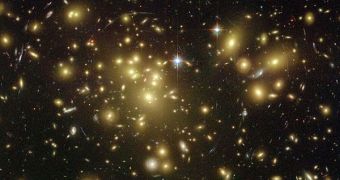Deep underground, inside a Canadian mine, researchers with the Sudbury Neutrino Observatory in Ontario are deploying a new detection chamber, aimed at identifying the elementary particles believed to make out dark matter.
A large portion of the international scientific community believes that the elusive stuff makes up for about 90 percent of all mass in the Universe, and that it is made up of so-called weakly-interacting massive particles (WIMP).
At the SNOLab, experts are taking on the task of discovering the elusive particles through building more and more advanced detectors.
These are usually large bubble-like chambers filled with special liquids. Given their depth, they are only disturbed by a few particles that are capable of penetrating to their location.
Theoretically, WIMP should be able to reach a mile underground as well, and physicists hope to use the new 4-kilogram bubble chamber they are installing at the SNOLab to find them.
This is not the only work they are conducting in the field. Later this year, they will add yet another, larger bubble chamber, most likely a 60-kilogram one.
The theory goes that, as dark matter passes through the chambers, the particles making it up will create bubbles in their wake, which will be analyzed immediately afterwards.
The elusive stuff has never been identified directly. Rather, astronomers can tell it exists by analyzing its influence on normal matter.
Dark matter clumps around galaxies and clusters, where it exerts a massive gravitational pull on the objects located in the vicinity of these cosmic structures.
“There is a lot more mass than literally meets the eye. When you look at the matter budget of the Universe, we have a big void there that we can't explain,” says University of Chicago associate professor in physics Juan Collar.
WIMP and particles called axions “seem to be perfect to explain all of these observations that give us this evidence for dark matter, and that makes them very appealing,” the expert further explains.
“We started with a detector the size of a test tube and now have increased the mass by a factor of more than a thousand,” says Andrew Sonnenschein, who is a physicist at the Fermi National Accelerator Laboratory (Fermilab), in Batavia, Illinois.
“it's exciting to see the first bubble chamber being sent off to SNOLab, because the low level of interference we can expect from the cosmic rays there will make our search for dark matter enormously more sensitive,” he concludes, quoted by Space Ref.
Follow me on Twitter @TudorVieru

 14 DAY TRIAL //
14 DAY TRIAL //